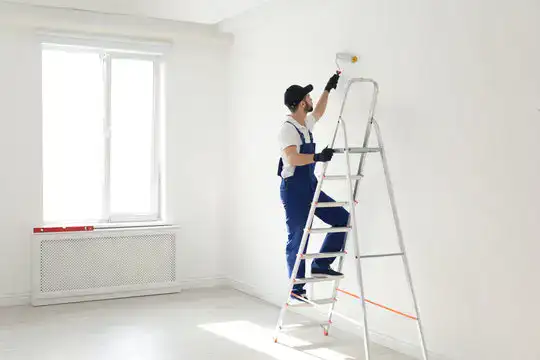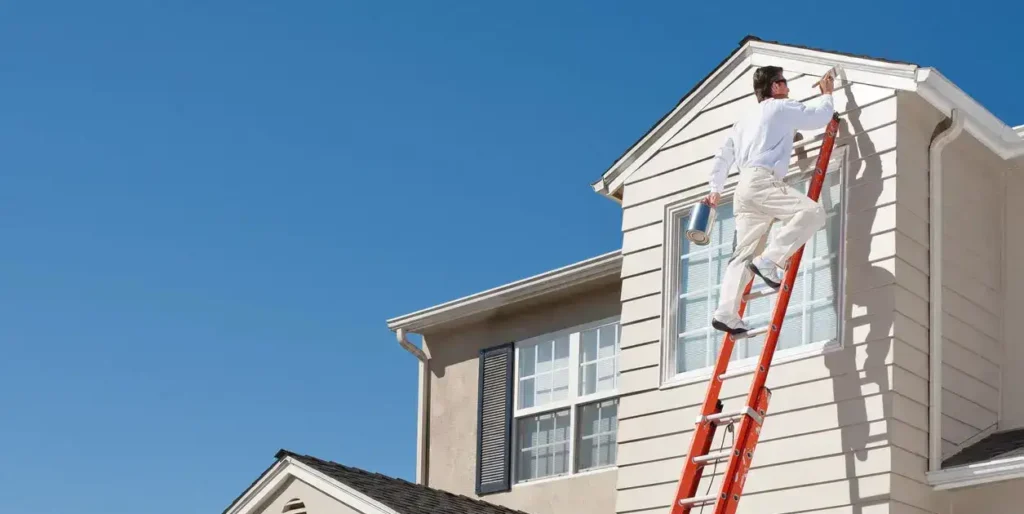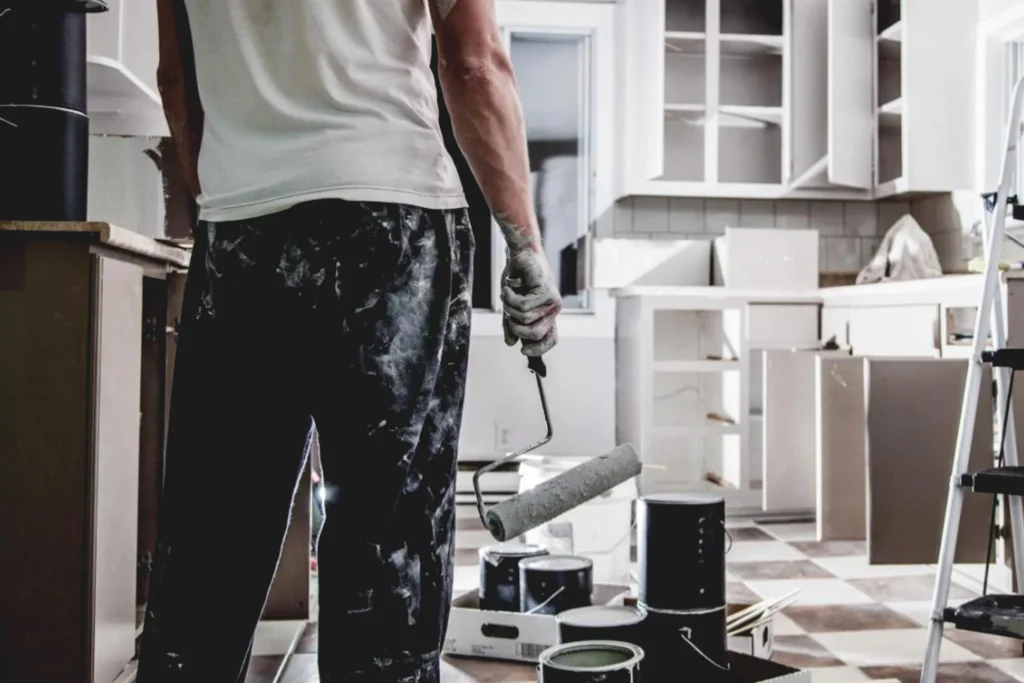A handyman typically charges between $195 and $910 to paint a room, with prices averaging $1 to $3 per square foot. This price is mostly for labor but may include additional charges for paint, primer, brushes, tape, and other materials. The total cost will depend on the area of the room, how worn the walls are, and how extensive a job it is.

Moreover, many recommended preparatory jobs such as cleaning, sanding, and jacket patching will cause the fee to soar. It guarantees a perfect job with professional handyman artistry. You end with the best possible painting project results by planning and budgeting for both materials and labor.
Factors Influencing the Cost of Painting a Room
1: Room Size
The size of a room is one of the primary determinants in costing out the painting of a room. More paint is needed to finish a larger room and more working time is involved. Thus, the increase in costs relates to material and labor expenditures.
The cheapest rooms to paint would mostly go up to smaller dimensions on the least amount of paint needed. A room measuring 10×10 feet, for instance, would cost way less than one that is 14 by 20 feet. The exact price was derived by measuring the room perfectly.
2: Room Condition
The condition of the walls affects the cost of painting. If there are cracks, holes, or peeling paint, extra work is needed. This increases both time and labor costs.
Walls in good condition are quicker and cheaper to paint. Less prep work is needed when the walls are smooth. However, damaged walls require repairs before painting, raising the overall cost.
3: Paint Quality
The type and quality of paint you choose can play a major part in the cost. More expensive but better-quality paints tend to give better coverage and last much longer. Paint comes in three forms; latex, acrylic, and oil-based, and varies in price and other advantages.
High-quality paints always require fewer coats and last longer, thus proving cheaper by time. Moreover, such paints also have many built-in advanced features like mold resistance, easy cleaning, and low VOCs to better develop indoor air quality or a healthy environment.
4: Number of Coats
The total cost for painting will be affected by the need for many coats for painting. The darker colors or heavy changes in paint color may require yet another coat or two more than usual to cover the surface. And so more paint and labor will be involved.
Most rooms would generally be exposed to a minimum of two coats in order to achieve an even and uniform finish. Some paints only need one coat for them to achieve good coverage; however, this is rare. The texture of the walls can also impact the number of coats applied.
5: Additional Features
Additional features like trim, doors, and windows can increase the cost of painting. These details require more time and effort to paint properly. The complexity of these features adds to both labor and material costs.
If the room has moldings, crown molding, or intricate designs, it will take extra time to paint. Each additional element, such as baseboards or wainscoting, adds to the project’s overall complexity. These features, though, can enhance the final look of the room.
6: Geographic Location
The cost of painting can vary depending on where you live. U.S. areas with a higher cost of living usually have higher labor rates. Rural areas, on the other hand, tend to be more affordable.
The demand for painting services in your area can also affect prices. In regions with high demand, labor costs may increase. Local climate conditions can also impact the painting process, affecting the overall cost and quality of the job.
Cost Breakdown for Painting a Room
Labor Costs
Depending on the size of the room and the experience of the handyman, wages range between USD 195 to 390 labor costs for the small room of 10 feet by 10 feet. For a medium room of 12 by 12 feet, it would probably cost USD 390 to 585. Then for a large room measuring 14 by 20 feet, the estimate is USD 585 to 910. Labor includes prep, painting, and clean-up.
Material Costs
Material costs include paint, primer, and tools such as brushes and rollers. About a small room, prices for materials would probably range from $65 to $130. For medium-sized rooms around this place, they would call for a range of $98 to $195 price-wise, while the high cost on most occasions may range from about $130 to $260 for big rooms. The specs of the paint and materials used may decide the final cost associated with it and also the life of the paint job.
Extra Costs
Additional obligatory assignments like patching and sanding holes, ceiling painting, etc. There can be wall repairs at a cost ranging from $65 upward.
Cost Breakdown by Room Size
Small Room (10×10 feet)
Labor Cost: $195 – $390
Material Cost: $65 – $130
Additional Costs: $195 – $520
Small rooms are typically quicker to paint but require attention to detail. The total cost for a 10×10 room can range from $455 to $1,040, depending on the quality of materials and prep work required.
Medium Room (12×12 feet)
Labor Cost: $390 – $585
Material Cost: $98 – $195
Additional Costs: $195 – $520
A medium room, such as a living room, may cost between $683 and $1,300. The cost varies based on complexity, including features like large windows or trim.
Large Room (14×20 feet)
Labor Cost: $585 – $910
Material Cost: $130 – $260
Additional Costs: $195 – $520
Small rooms typically cost anywhere between $427 and an awful $830. Where rooms such as master bedrooms or living areas would range between $910 and $1,690, high ceilings and more features usually add to the cost.
Choose Affordable Paint
You’ll find superior brands of paint that cover you for a lifetime, like those offering hosepipe-friendly paints, but there are very good mediums also. Sales distribution-free discounts available in local hardware outlets also bring in a midrange paint brand that performs nicely but costs almost nothing.
Comparisons of paint between brands can even narrow down your option to one that best fits your budget without compromising quality. Also, open standard colors instead of custom mixed paints that may save further by giving economically an excellent cost for the paint project.
Limit the Number of Colors
One way to save on costs is to limit the number of colors in a room: One or two colors would usually suffice to paint an entire room, and that saves on time and labor because fewer coats are necessary to paint a room. A much simpler color scheme makes the room look cohesive, and furniture and decor match more easily. Use different paint finishes to introduce variety into a color scheme rather than adding different colors.
Combine Projects
By consolidating painting projects, you can save on household costs. Paint two rooms together instead of doing them separately to lessen the costs of labor. There, the handyman could even offer a higher discount for providing services for a larger job.
Bulk Purchase of Paint would also reduce the overall material cost. You could set your task to coordinate several rooms at once to optimize the cost. However, it cuts the time that you will spend on each project and reduces interruptions.
Conclusion
Factors influencing the cost of hiring a handyman to paint a room include the room size, the extent of disrepair, and the quality of the paint materials employed. For example, labor and materials might average cost-wise with variation depending upon the project. Thus, all forms of future planning, oiling down on a budget-priced paint, or grouping jobs might help minimize costs yet end up with a professional-looking, long-lasting paint job.


